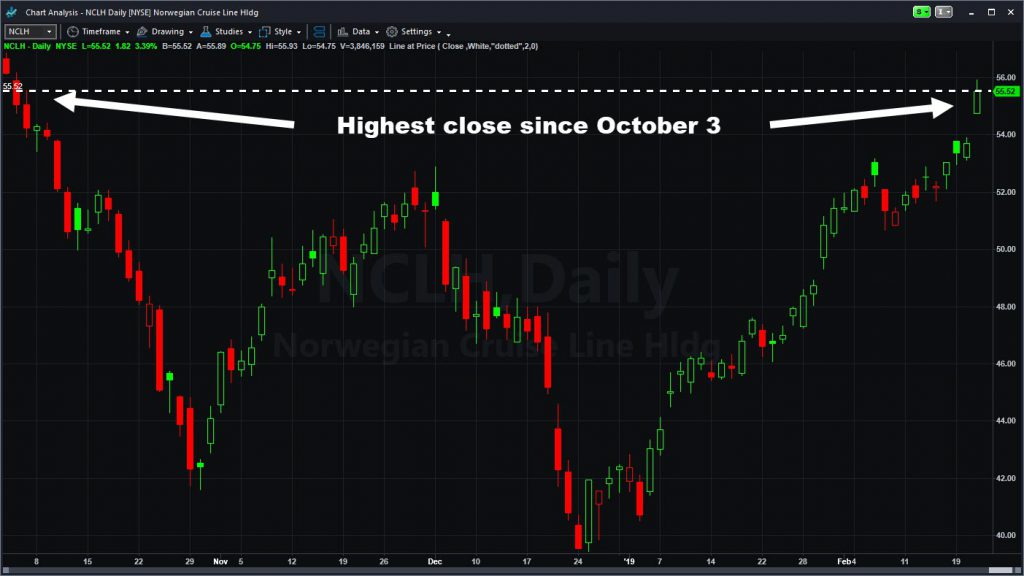Something unusual is happening with prices, and it’s become good news for certain companies this year.
Inflation data from the government shows the price of services rose 2.7 percent year over year in January, while commodities had their first drop since November 2016. That’s been good news for companies like hotel operators and leisure stocks.
Hilton Worldwide (HLT) closed at its highest level in eight months yesterday, while Norwegian Cruise Lines (NCLH) closed at a price last seen in early October. Both advanced on better-than-expected earnings and boasted of strong pricing.
Related companies like Marriott (MAR), Host Hotels & Resorts (HST), Wyndham Hotels & Resorts (WH), Hyatt (H) and Royal Caribbean Cruises (RCL) have also outperformed. Those names have all delivered at least twice the gain of the broader S&P 500 in the last month.
Most readers have probably heard that consumers increasingly want more “experiences” and less “stuff.” While this seems true anecdotally, the inflation numbers and corporate results cited above suggest the trend is playing out in the real economy. And, the market is already trying to identify winners and losers.
Other clues seem to confirm the move toward experiences. Both HLT and NCLH, for instance, explicitly mentioned increased demand for “luxury.” That wouldn’t necessarily be true if people were simply travelling more for other reasons.

Norwegian Cruise Lines (NCLH) chart with “Line at Price” indicator.
Next, service price increases are no longer tied to medical costs. Health care led the inflationary charge for most of the postwar era, but that category is now starting to lag the broader index. Speaking of health care, did you see the selloff in CVS Health (CVS) this week?
Health Care vs Pet Care
So if people aren’t paying more for doctors, where is the money going? The answer seems to be “miscellaneous personal services” and “personal care services.” (Both rose about 4 percent.) You also have the latest hot area: pet services, up +3.8 percent.
Combine these numbers with wage data from the Labor Department showing paychecks rising at the quickest pace since the last recession ended. Throw in a recent New York Federal Reserve poll finding an acceleration of spending by lower-income consumers. And, don’t forget about the steady flow of positive employment data.
When you put all the pieces together, a narrative emerges: Americans have money and are willing to spend. But the places where they spend money have changed dramatically from previous decades. Stuff like couches and big-screen TVs are “out,” while experiences, travel and services are “in.”
This has been true for a while, as readers of Market Insights know. But the interesting thing now is that the trend seems to be manifesting itself in some very specific stocks and sectors. Leisure’s a winner. The dog-and-cat trade is emerging (stay tuned for more on that). But “stuff,” like general merchandise, is going the way of Palm Pilots and Rubik’s Cubes. Health care also has some weak spots.
Finally, remember that some leisure services are more in demand over the summer. Will they grab more of investors’ attention as the weather heats up?


























